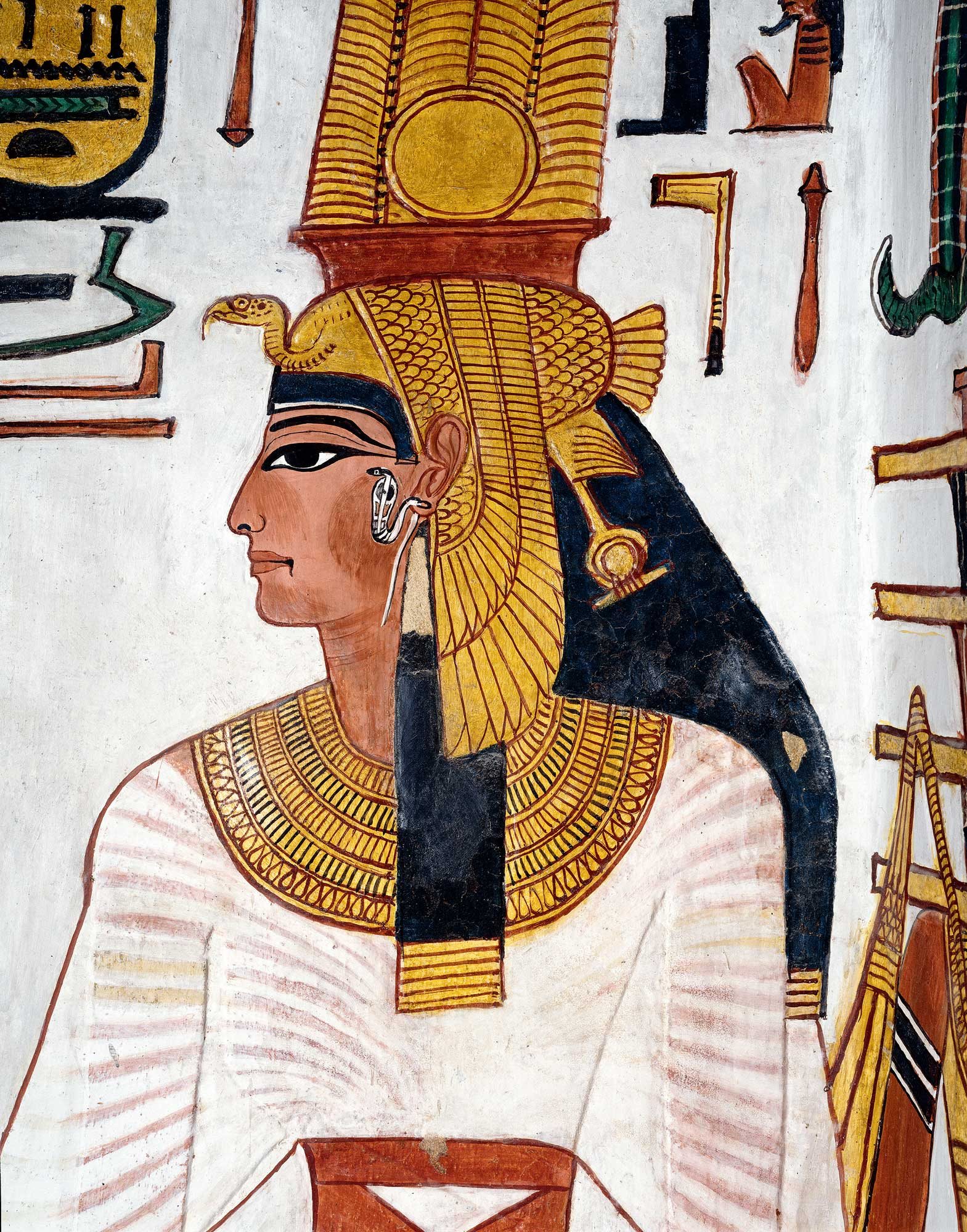What the king did - or rather, didn't do - for her tomb, suggests 'yes'.
"Hereditary noblewoman; great of favours; possessor of charm, sweetness and love ..." - from the door jamb of the entrance to the tomb of Queen Nefertari.
We know very little about Queen Nefertari, the first wife of Ramesses II. Royal marriages in ancient Egypt were often designed to bring about closer ties between powerful families, using a beautiful bride to seal the deal. So was Ramesses II's marriage to Nefertari simply a political arrangement, or did the great king actually love his wife?
For clues, we looked to the fabulously-decorated tomb her built for her in the Valley of the Queens in Western Thebes.
The king spared no expense. Her tomb is decorated with brilliantly-coloured images and text that guide and protect Nefertari through her journey to the Underworld.
Ramesses II usuallynever missed an opportunity to glorify himself. Even the 'small temple' at Abu Simbel dedicated to the goddess Hathor of Ibshek and the deified Nefertari, was adorned with two grand statues of Nefertari, and four of Ramesses II.
However, in her tomb, Ramesses is not depicted or even mentioned. Not once. Ramesses made his final act of devotion to his Queen all about her.
Pictured is a scene from Nefertari's tomb. Here we see the queen as she is led by the falcon-headed god Harsiese ("Horus, son of Isis") (out of shot). The god holds Nefertari by the hand to introduce her to Re-Horakhty and the Western Goddess (Hathor).
The queen wears a diaphanous linen robe with a long red sash around her waist. The scene comes from the south wall of Chamber E, one of a series of colourful recesses that lead from the tomb’s entrance chamber into a side chamber.
Today Nefertari’s vibrantly-painted, but incredibly fragile tomb is mostly closed for its own protection. I say 'mostly', because special permission is occasionally granted for short visits by tour groups who are happy to pay the high price for the rare ticket. I imagine it's worth the money!
Photo: Araldo de Luca.
